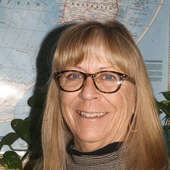- Research tips and McCook Brick Company- solid as a brick (12/16/24)
- Big Give appreciation and some railroad characters (11/15/24)
- George Randel becomes a landowner, gets married, and takes in a Buffalo Bill show (9/20/24)
- The memoirs of George F. Randel, early settler of Red Willow County (9/12/24)
- Vietnam War Memorial honors Nebraskans who served (6/13/24)
- McCook business promotions - just prior to 1893 stock market crash (5/30/24)
- Shall we dance? Meet you at the Gayway (12/8/23)
Clash among the titans
Friday, January 20, 2023
“Bill” Gray has a hotel scheme up his sleeve that is worth sitting up and taking notice of. The name “Keystone” is alone suggestive. At any rate if somebody doesn’t “See Kelly” first, maybe “Bill” will put his scheme over.” McCook Tribune May 15, 1919.
And so, with that one little innocuous comment, the citizens of McCook were teased with the proposition of a “Hotel Keystone”. “There is a time in the history of a city which if taken at the psychological moment leads on to accomplishment. There are some favorable indications that the time has arrived for McCook to put over that long-contemplated and much discussed new hotel building campaign.”
“The basis or reason for the above paragraph is to be found in the enthusiastic happenings in the banquet room of McCook Lodge No. 135, A.F. & A. M. Tuesday evening when something was started in this direction which bids fair to accumulate power and capitol enough to lead on to victorious realization in time.”
“C.B. Gray (Bill) was made the chairman of a committee composed of W. B. Mills, G.A. Bash, W. M. Sommerville, E.D. Perkins, G. H. Watkins, F. M. Hergenberger, A. Barnett and P. Walsh, to take in charge of the matter and organize and inaugurate a vigorous and earnest campaign for stock subscription, and to begin such steps as may be necessary to start the project immediately.”
“The corner north of the Temple Building is the location agreed upon without objection as the logical and best one in the city for the purpose, facing the superb Federal building on the east and the splendid Temple building on the south, a frontage of 75 feet being available for the purpose.” McCook Tribune, May 22, 1919.
The Masonic Lodges, having successfully raised the funds for the construction of the Masonic Temple building, were now in the drivers’ seat to raise $150,000 for a new hotel. It is not that McCook had no hotels at the time, there were actually several including the Commercial Hotel which sat on the corner of Main and East C Street. The Commercial was the site of most of the “important” business and social meetings, provided some business spaces, had a dining room, hotel rooms and also suites in which many a newly wed couple “took to housekeeping” while they were building a home. It was, however, a wooded structure and was beginning to show its age. The city movers and shakers found it to be unsuitable as a representation of McCook’s finest lodging house.
A corporation was formed and shares sold. The July 21, 1919, Tribune carries the notice that Lots 10, 11, 12, Block 9, Original Town have been deeded to the corporation “and next to this satisfactory fact is the other pleasing fact that this superb location has only cost the corporation the sum of $ 3,750, thanks to the generosity of Mr. B. M. Frees and of Mr. A. Barnett, who owned and arranged the transfer of the properties.”
“Lots 1,2,3, Block 9, Original town will be the location of the Y.M.C.A building, in case McCook meets the conditions of Mr. Frees’ gift for that purpose. The time condition the Tribune understands, is one year from the signing of the treaty of peace.” (WWI)
Never ones to let the grass grow under their feet, the Keystone Hotel committee enthusiastically announced on October 2, 1919, that the subscriptions for stock were closed and the $150,000 goal had been reached. It is interesting to note that these were actual shares in the corporation and comments that they could earn upwards of 5% on their investment made during the fund raising. Who knows if that ever happened, but basically, this was once again proof that McCook sprang from some of the most aggressively supportive (both financially and personally) citizens you could find anywhere. Raising that sum in 1919 is equivalent to raising $ 2.6 million today and doing so in less than 5 months is amazing. One must also understand that at the same time, funding was being raised to finance the balance of the Y.M.C.A. building on the north corner of the same block.
Referring back to the first paragraph in this article, here is how that ties the “Hotel Keystone” into the comment about “See Kelly”.
As you can well imagine, J. E. Kelly, owner of the Commercial Hotel, was none too happy about the whole idea nor did he like, after years of being “the Location” downtown, having his property downgraded so publicly. That all became a moot point when the Commercial burnt to the ground on December 7, 1919, a scant two months after the announcement that the Keystone was fully funded.
I look at this as a clash among titans. Mr. Kelly was a mover and shaker in the community also. He contributed land to this community from which we still benefit today. Lesson learned might be that when you hold onto something without any intention of updating or even maintaining it, the value can drop in the blink of an eye.

